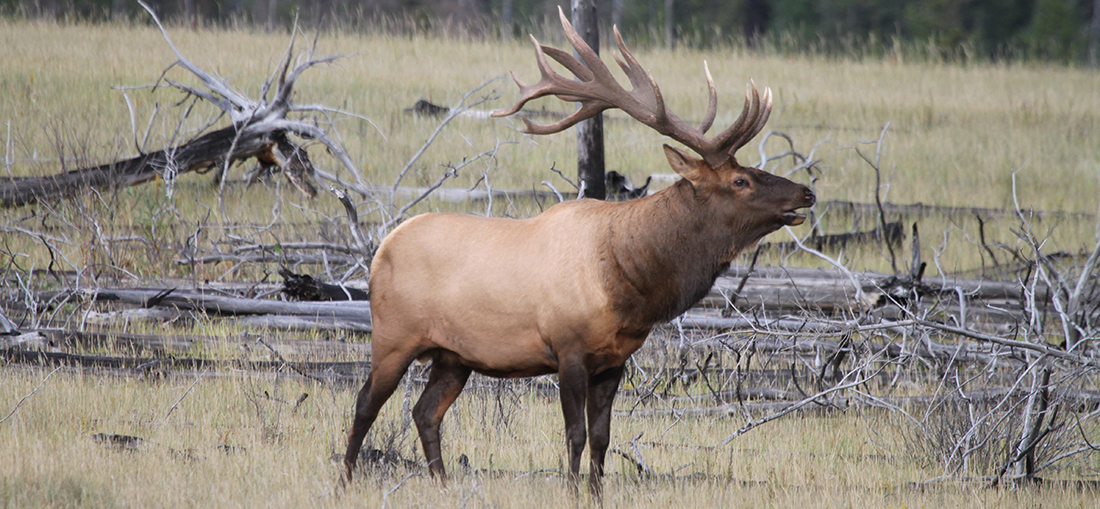
In advance of proposed twinning of Alberta's Highway 3, scientists have identified best wildlife crossing corridors to ensure genetic diversity of elk.
To ensure the continued success of Alberta's elk population, scientists have identified ideal locations for conservation corridors in preparation for the proposed changes to Highway 3 near Crowsnest Pass, Alberta.
"The twinning of the highway will reduce the ability of animals to cross," says Mark Boyce, University of Alberta ecology professor and Alberta Conservation Association endowed chair in fisheries and wildlife. "This is especially significant for male elk that roam far from their home range ensuring gene pool diversity."
Understanding animal movement informs planning
In previous planning for conservation crossings, Boyce explains that it typically has been construction project managers rather than wildlife ecologists who have suggested proposed pathways. "Engineers can't show what is best for the animals. It goes beyond what works best for infrastructure. We need to understand what drives animal movement in order to identify the best locations for them to cross the highway."
Boyce notes that elk tend to avoid roads and areas with high human activity and that is important for the animals to be able to disperse from their home range in order to ensure genetic diversity. If the species are forced to stay in too close of proximity to their home range as a result of changes to the highway infrastructure, effects could include such dangers as loss of genetic diversity with consequences such as increased juvenile mortality.
"It goes beyond what works best for infrastructure. We need to understand what drives animal movement." -Mark Boyce
The renowned wildlife ecologist notes that the Mistakis Institute is hosting a workshop on October 6 to review strategies for dealing with the twinning. Boyce has worked on similar studies in relation to Alberta's grizzly bear and cougar population and notes that, like bears, elk require special consideration in terms of not only infrastructure development but also land acquisition programs, particularly in the Highway 3 Crowsnest Pass area, a popular tourist destination.
The findings, "Dispersal ecology informs design of large-scale wildlife corridors," were recently published in the open-access journal PLOS One.
Royal Society honours Boyce's lifetime achievement
The Royal Society of Canada announced September 29 that Mark Boyce will receive the Miroslaw Romanowski Medal later this fall in recognition for his lifetime contribution to solving environmental problems with numerous wildlife conservation projects. Interestingly, the first ever scientist to receive the honour was another well-known University of Alberta professor, David Schindler.